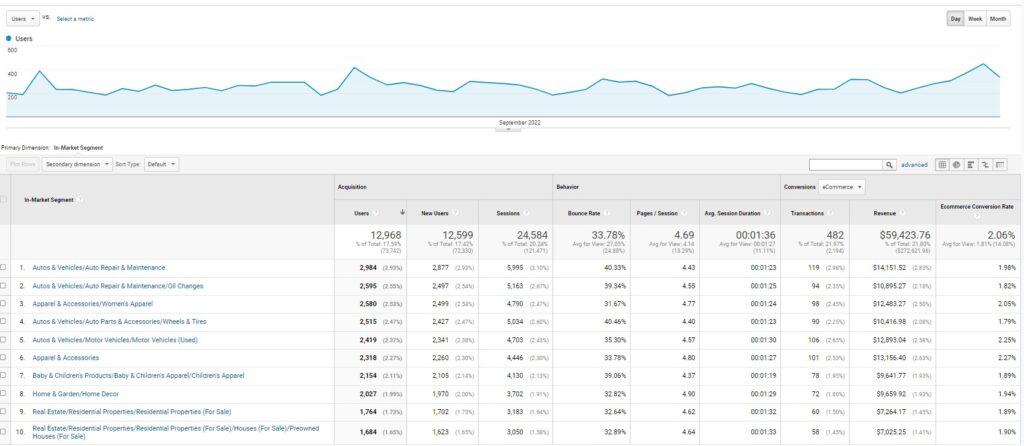Apple’s iOS 14 update allows users to opt out of tracking. The move lost Meta $10 billion in ad revenue last year. What does the iOS 14 rollout and Meta’s recent updates to user targeting mean for paid advertising campaigns?
Facebook and Instagram’s ad targeting is driven by demographics, interests, and behaviors. However, targeting functionality has been reduced and limited in Facebook and Instagram ads since the release of iOS 14, updates to targeting Meta rolled out on January 19, 2022, and additional updates to targeting on April 11, 2022.
As a result, every company advertising or posting paid content on Facebook and Instagram is significantly challenged on the platform. To recap the key impacts from those updates:
- Beginning with iOS 14, which rolled out in 2021, iOS devices show pop-ups asking users to give apps permission to track their data. (iOS users can also select to prevent all apps from tracking their data as a default.) Tracking user data was a huge part of how Meta provided audience targeting and website event tracking functions. This change significantly impacts ad personalizations and performance reporting. (As a measure for what a massive impact this feature had on advertisers, The Verge writes:
“People tapping ‘Ask app not to track’ on Facebook and Instagram cost Zuckerberg $10 billion in lost ad revenue — the equivalent of what he spent to fund his metaverse division — last year alone.”
- Meta’s Jan 19, 2022 updates to targeting removed some detailed targeting options including redundant or little-used targeting. They also removed detailed targeting optionos that related to potentially sensitive topics including “targeting options referencing causes, organizations, or public figures that relate to health, race or ethnicity, political affiliation, religion, or sexual orientation.” As examples, Meta removed options including “chemotherapy,” “Jewish holidays,” and “same-sex marriage.”
- Meta’s April 11, 2022 update consolidated the Ad Topics and Interest Categories controls into a single Ad Topics control, which will cover a more extensive set of ad topics. The Ad Topics control option is how Facebook and Instagram users set ad preferences to reflect the interests advertisers can use to target them. For example, a user might choose to see fewer ads about home decór, which prevents advertisers from targeting that user based on an interest in home decór.
As a repercussion, businesses advertising on Facebook and Instagram are not able to target select demographics, interests, or behaviors that have been removed or banned by Meta. For example, the option to target “LGBT culture” has been removed or banned by Meta, as shown in the image below.
When these changes rolled out, we asked ourselves:
“How do we reach our target audience with Facebook and Instagram ads given limited targeting functionality?”
It’s a massive challenge.
In the time since these shifts occurred, we’ve developed a unique segmentation process and custom targeting strategy based on an understanding of a brand’s persona. We can’t always target the most relevant keyword due to the new restrictions, and we can’t always filter on the most granular, relevant actions and interests.
But we can leverage other interests, behaviors, and demographics of a brand’s desired audience that ARE available on Facebook and Instagram’s advertising platforms. (Some of this information is driven by in-market segment data we can pull from Google Analytics that corresponds to data also available on Facebook and Instagram Ads).
For example, consider a queer-owned business that sells clothing and apparel that is popular with the LGBTQ community. They would not be able to specifically target “LGBT culture” in Facebook and Instagram ads with these new changes. Additionally, some relevant interests and behaviors might be harder to target based on a user’s choice to block an iOS app (or all apps) from tracking them as well as any modifications they made to the targeted interests in Meta’s Ad Topics control panel. Consider a privacy-aware woman in her 30s — with the new iOS and Meta settings, she might have blocked her retail apps from tracking her purchases or browsing history, and she might have chosen not to see ads related to “clothing & apparel” in the Ad Topics control panel. The potential of reaching this member of the apparel company’s target demographic dwindles.
However, we can still leverage detailed targeting data from Facebook and Instagram’s advertising platforms. We can also add in data from Google Analytics, such as Apparel & Accessories > Women’s Apparel

Paid advertising is often a chaotic world, and when massive companies like Apple and Meta change the way their apps track and share data, the foundation of paid advertising strategies shifts. It can seem like the rug is being pulled out from under you, and essentially, it is.
That’s where broad expertise in digital marketing helps. We were experts in the way Meta tracked and shared data with advertisers and we leveraged the older, more expansive means to our clients’ full advantage while it lasted. Now that the paradigm has changed, we turn to other tools at our disposal—strong customer personas, user research, and data from Google Analytics in this case. And as the apps and algorithms and rules change, we’ll stay nimble and get the job done.
